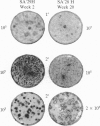Abstract
"Spontaneous" neoplastic transformation of cells in culture has been shown to be an adaptive response to moderate physiological constraints such as contact inhibition and lowered concentrations of serum. These are the same constraints that promote normal differentiation of a variety of cell types. Because both normal and neoplastic development represent enduring changes in response to constraint, spontaneous transformation can be considered a form of epigenesis. This phenomenon permits the use of established cell lines in developing general epigenetic principles with all of the advantages of manipulation, efficient cloning, and quantification afforded by such systems. Being environmentally sensitive, however, the responsive capacity of cell lines is subject to fluctuation and long-term modification. I therefore set out to define the conditions used in maintaining cells that influence their competence to undergo transformation with the aim of controlling that competence. It proved to be sensitive to both the population density and frequency of three different repetitive passage regimens. Both the saturation density of the cells and their capacity to produce transformed foci varied initially in different ways within the same regimen in two consecutive passage series starting from the same frozen stock, but both parameters eventually settled down to values characteristic of each of the three regimens. As a result, three sublines were developed of high, intermediate, and low competence for transformation. Each of the sublines has special advantages for studying different aspects of epigenetic change. In the process of developing the sublines, a number of observations were made that reinforce the epigenetic nature of neoplastic transformation and are consistent with the concept of progressive state selection as the basis of the change. That concept can be considered a first step in the formal analysis of epigenesis.
Full text
PDF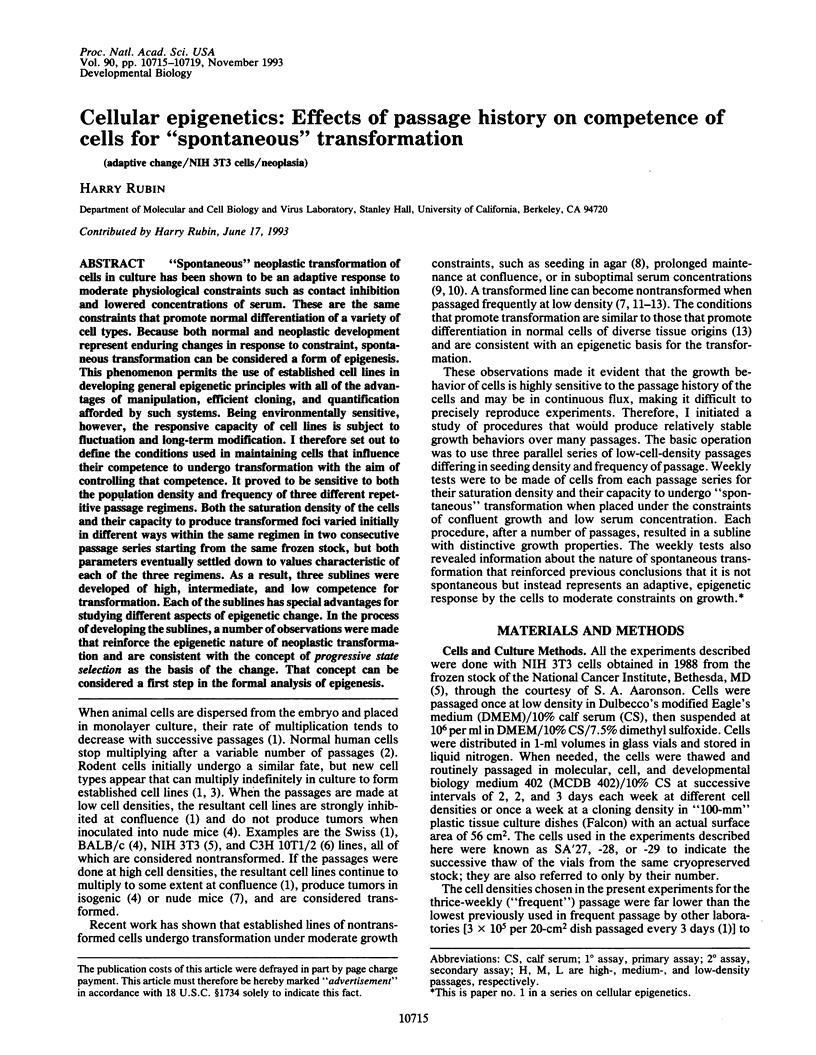
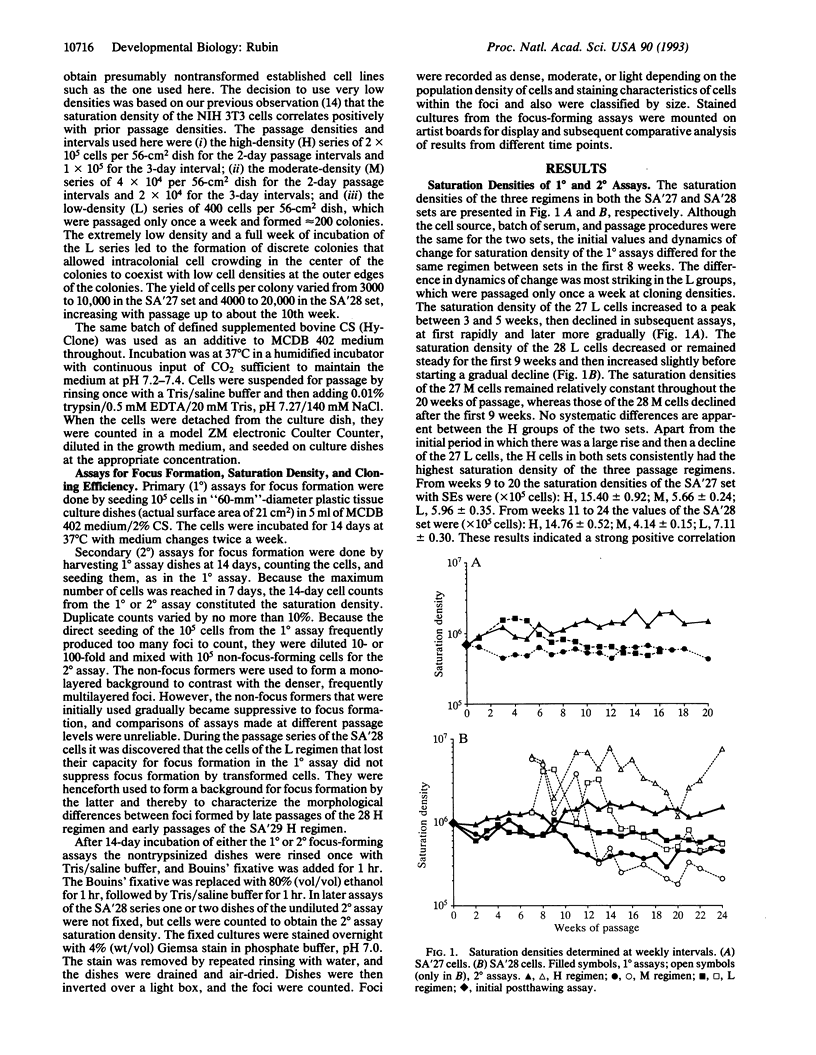
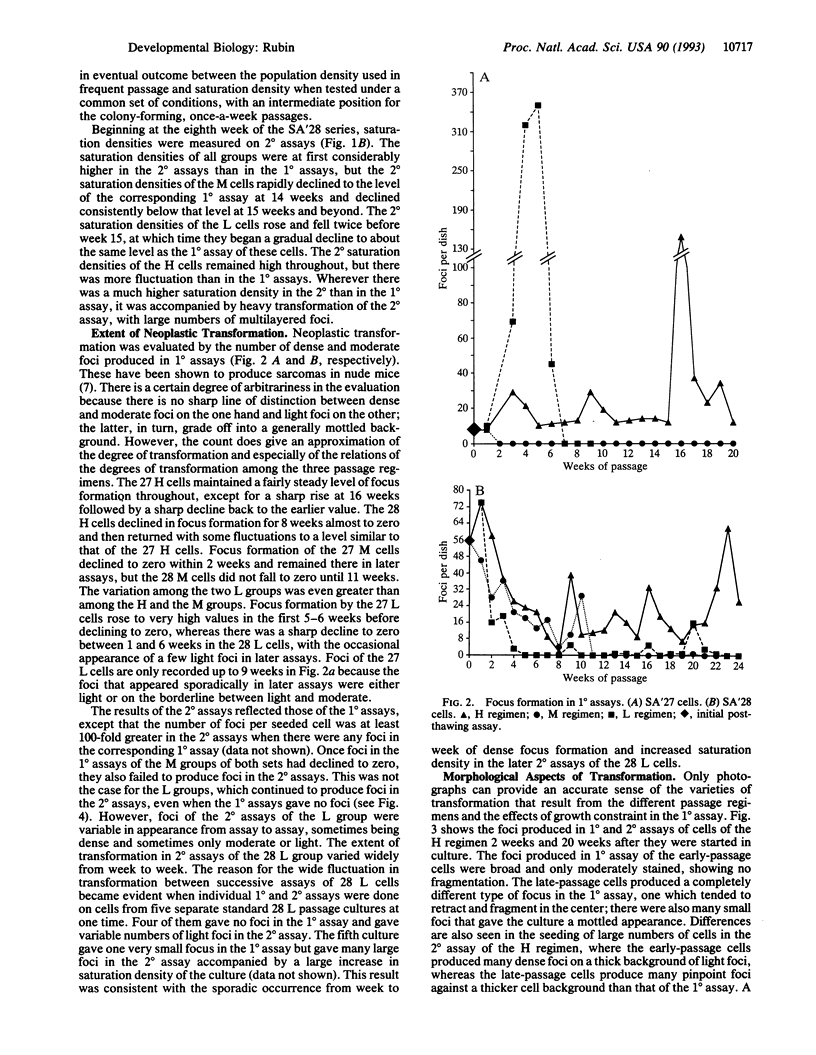
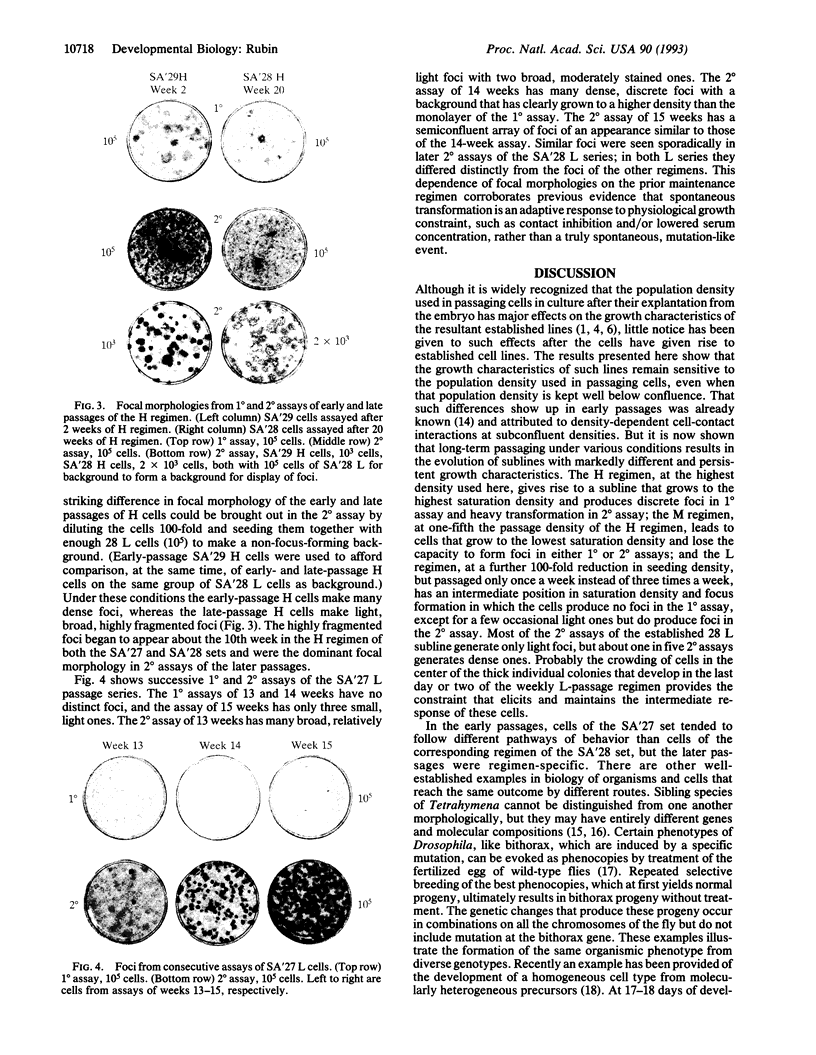

Images in this article
Selected References
These references are in PubMed. This may not be the complete list of references from this article.
- Aaronson S. A., Todaro G. J. Basis for the acquisition of malignant potential by mouse cells cultivated in vitro. Science. 1968 Nov 29;162(3857):1024–1026. doi: 10.1126/science.162.3857.1024. [DOI] [PubMed] [Google Scholar]
- Augenlicht L. H., Wahrman M. Z., Halsey H., Anderson L., Taylor J., Lipkin M. Expression of cloned sequences in biopsies of human colonic tissue and in colonic carcinoma cells induced to differentiate in vitro. Cancer Res. 1987 Nov 15;47(22):6017–6021. [PubMed] [Google Scholar]
- Balaban G. B., Herlyn M., Clark W. H., Jr, Nowell P. C. Karyotypic evolution in human malignant melanoma. Cancer Genet Cytogenet. 1986 Jan 1;19(1-2):113–122. doi: 10.1016/0165-4608(86)90378-x. [DOI] [PubMed] [Google Scholar]
- Brouty-Boyé D., Gresser I., Bandu M. T. Stability of the phenotypic reversion of x-ray transformed C3H/10T1/2 cells depends on cellular proliferation after subcultivation at low cell density. Carcinogenesis. 1982;3(9):1057–1061. doi: 10.1093/carcin/3.9.1057. [DOI] [PubMed] [Google Scholar]
- Geleick D., Müller H., Matter A., Torhorst J., Regenass U. Cytogenetics of breast cancer. Cancer Genet Cytogenet. 1990 Jun;46(2):217–229. doi: 10.1016/0165-4608(90)90107-l. [DOI] [PubMed] [Google Scholar]
- Jainchill J. L., Aaronson S. A., Todaro G. J. Murine sarcoma and leukemia viruses: assay using clonal lines of contact-inhibited mouse cells. J Virol. 1969 Nov;4(5):549–553. doi: 10.1128/jvi.4.5.549-553.1969. [DOI] [PMC free article] [PubMed] [Google Scholar]
- Kraemer P. M., Travis G. L., Ray F. A., Cram L. S. Spontaneous neoplastic evolution of Chinese hamster cells in culture: multistep progression of phenotype. Cancer Res. 1983 Oct;43(10):4822–4827. [PubMed] [Google Scholar]
- Mertens F., Heim S., Mandahl N., Johansson B., Mertens O., Persson B., Salemark L., Wennerberg J., Jonsson N., Mitelman F. Cytogenetic analysis of 33 basal cell carcinomas. Cancer Res. 1991 Feb 1;51(3):954–957. [PubMed] [Google Scholar]
- Nanney D. L. Molecules and morphologies: the perpetuation of pattern in the ciliated protozoa. J Protozool. 1977 Feb;24(1):27–35. doi: 10.1111/j.1550-7408.1977.tb05277.x. [DOI] [PubMed] [Google Scholar]
- Reznikoff C. A., Bertram J. S., Brankow D. W., Heidelberger C. Quantitative and qualitative studies of chemical transformation of cloned C3H mouse embryo cells sensitive to postconfluence inhibition of cell division. Cancer Res. 1973 Dec;33(12):3239–3249. [PubMed] [Google Scholar]
- Rubin A. L., Arnstein P., Rubin H. Physiological induction and reversal of focus formation and tumorigenicity in NIH 3T3 cells. Proc Natl Acad Sci U S A. 1990 Dec;87(24):10005–10009. doi: 10.1073/pnas.87.24.10005. [DOI] [PMC free article] [PubMed] [Google Scholar]
- Rubin A. L., Yao A., Rubin H. Relation of spontaneous transformation in cell culture to adaptive growth and clonal heterogeneity. Proc Natl Acad Sci U S A. 1990 Jan;87(1):482–486. doi: 10.1073/pnas.87.1.482. [DOI] [PMC free article] [PubMed] [Google Scholar]
- Rubin D. C., Ong D. E., Gordon J. I. Cellular differentiation in the emerging fetal rat small intestinal epithelium: mosaic patterns of gene expression. Proc Natl Acad Sci U S A. 1989 Feb;86(4):1278–1282. doi: 10.1073/pnas.86.4.1278. [DOI] [PMC free article] [PubMed] [Google Scholar]
- Rubin H. 'Spontaneous' transformation as aberrant epigenesis. Differentiation. 1993 Jun;53(2):123–137. doi: 10.1111/j.1432-0436.1993.tb00652.x. [DOI] [PubMed] [Google Scholar]
- Rubin H. Uniqueness of each spontaneous transformant from a clone of BALB/c 3T3 cells. Cancer Res. 1988 May 1;48(9):2512–2518. [PubMed] [Google Scholar]
- Rubin H., Xu K. Evidence for the progressive and adaptive nature of spontaneous transformation in the NIH 3T3 cell line. Proc Natl Acad Sci U S A. 1989 Mar;86(6):1860–1864. doi: 10.1073/pnas.86.6.1860. [DOI] [PMC free article] [PubMed] [Google Scholar]
- Shapiro J. R., Yung W. K., Shapiro W. R. Isolation, karyotype, and clonal growth of heterogeneous subpopulations of human malignant gliomas. Cancer Res. 1981 Jun;41(6):2349–2359. [PubMed] [Google Scholar]
- TODARO G. J., GREEN H. Quantitative studies of the growth of mouse embryo cells in culture and their development into established lines. J Cell Biol. 1963 May;17:299–313. doi: 10.1083/jcb.17.2.299. [DOI] [PMC free article] [PubMed] [Google Scholar]
- Vogelstein B., Fearon E. R., Hamilton S. R., Kern S. E., Preisinger A. C., Leppert M., Nakamura Y., White R., Smits A. M., Bos J. L. Genetic alterations during colorectal-tumor development. N Engl J Med. 1988 Sep 1;319(9):525–532. doi: 10.1056/NEJM198809013190901. [DOI] [PubMed] [Google Scholar]
- WADDINGTON C. H. Genetic assimilation. Adv Genet. 1961;10:257–293. doi: 10.1016/s0065-2660(08)60119-4. [DOI] [PubMed] [Google Scholar]
- Yao A., Rubin A. L., Rubin H. Progressive state selection of cells in low serum promotes high density growth and neoplastic transformation in NIH 3T3 cells. Cancer Res. 1990 Aug 15;50(16):5171–5176. [PubMed] [Google Scholar]
- Yao A., Rubin H. Sensitivity of transformation to small differences in population density during serial passage of NIH 3T3 cells. Proc Natl Acad Sci U S A. 1992 Aug 15;89(16):7486–7490. doi: 10.1073/pnas.89.16.7486. [DOI] [PMC free article] [PubMed] [Google Scholar]



